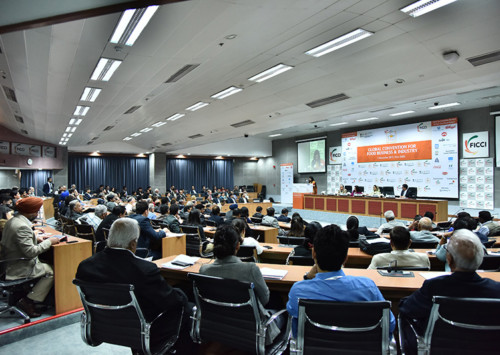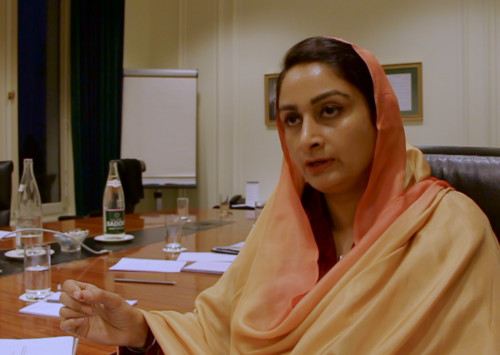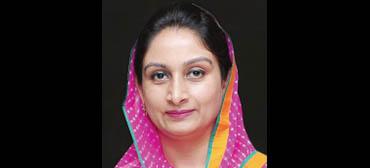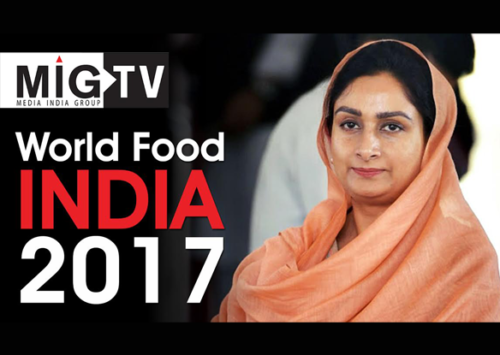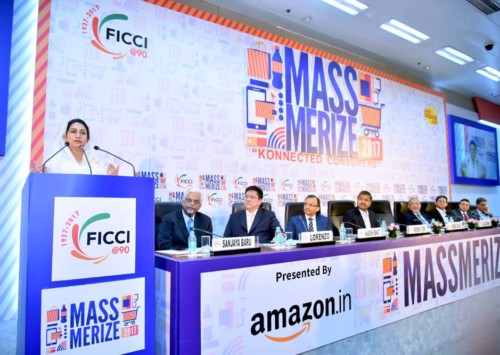Harsimrat Kaur Badal, Union Minister of Food Processing, Govt. of India
Biz@India
September-October 2017
India has a USD 600 billion retail sector, out of which 70 pc is food, which is set to further increase by 2020, says Badal.
With India being the one of the largest food producer in the world, Indian food processing industry has a lot of potential in the perishable sector. However, at the same time, issues related to food wastage remain.
Harsimrat Kaur Badal, union minister of food processing, India, talks to Biz@India about the food processing infrastructure, cold chain facility, World Food India 2017 summit, and more.
India is hosting the World Food India summit this year. What do you see this event to be? What are the various components that are being placed?
India is one of the largest producers of food and we are also one of the largest consumers. We have a USD 600 billion retail sector out of which 70 pc is food, which is set to further increase by 2020. Over the last three years, government has taken a number of initiatives to double farmers’ income, to have happy farmers and happy consumers by 2022. To ensure this, there needs to be a lot of improvement, so the government has given lot of emphasis on food processing because the more this industry expands, the more the farmer will benefit as the raw material for this industry is the farmers’ produce. As of today, a big producer like India processes only 10 pc of what it produces and smaller countries like Malaysia and Indonesia process almost 70-80 pc of what they produce. As a result of low processing, we have very high wastage, which obviously leads to low availability therefore higher prices.
And that is how the idea of World Food India came up – to provide a platform for global companies to interact with domestic companies. World Food India is scheduled for November 3-5 this year in the national capital, New Delhi where all Indian states are going to be showcasing their produce, policies, infrastructure and what tie-ups they are interested in. Over 20 international countries are coming with strong business delegations, some with even ministerial delegations. We have partner and focused countries, sectorial meets and a lot of B2B and G2G networking.
Along with this, there is going to be a Vibrant Food Street, which is to highlight cuisines of India. Because internationally when you go to Indian sections at big retail chains, you’ll be lucky if you find Indian curry, but nothing more.
Whereas in India, cuisines, beverages, and desserts, differ from state to state. We will showcase this diversity to the world. Today, a large number of Indian population lives overseas, and they often want what is traditional and native to their state. So it’s to tell the retail chains that if you got Indian diaspora there then there is a lot you can take back from India.
At the same time, international companies will have a chance to test that produce on the Indian palate to see how it reacts. The street not only comes with business opportunities but there will also be a light side to it where there will be international chefs working together with top Indian chefs to create something that is international but with Indian ingredients, spices or may be come up with a new type of fusion food.
You mentioned about participation from over 20 countries. How much overseas business do you expect?
Out of 20, two-three countries are going to be the partner countries, and two focus countries. The numbers are increasing but the problem is that we are running out of space so we are trying to expand to get some more space in which case, there will be a lot more participation.
Food processing sector in India and also across the world, notably in Europe, is driven by small and medium-sized enterprises (SMEs). So are you also getting them on-board?
This time we are targeting more on SMEs because the giants manage to go across continents and find their partners. It’s the small and medium sized companies who have the know-how and want to expand their footprint and want to enter Indian market but don’t know how to go about it. We are keen that they are the ones who come here and they too then partner with us. We also want that our SME industry is the one to benefit maximum from this so that maximum amount of movement starts at the ground level.
In Europe, which countries are you focusing on?
We have Denmark as the partner country and Germany most likely will be the partner country as well, with Netherlands and Italy as focus countries. A whole lot of other countries like France and Spain are also participating.
Do you think that there is a hesitation about India still being a difficult place to do business?
No, I don’t think so. Especially after the Goods and Services Tax (GST) becoming a reality. There’s a huge amount of interest that such a huge economic reform has taken place and made things lot easier for businesses to enter. Of course, we are the fastest growing economy and the highest amount of Foreign Direct Investment (FDI) that has come in, has placed a faith to conduct business in India. ‘Digital India’ and ‘Make in India’ are initiatives taken in this regard by the government and the difference has begun to show on ground in every sector. But when I talk about FDI in the food processing sector, there has been a 40 pc increase from last year.
As the sector expands, what about availability of efficient manpower? Also, are we keeping pace with training enough people?
The Prime Minister of India, Narendra Modi, foresaw all this and that’s why he came up with ‘Skill India’. We were given targets as to how many people we have to skill and for that we made a list of different sectors in food processing. We asked companies about the kind of skilled manpower they look for while hiring and based on their requirements, we made a cost content and then hired a company that would go out and impart those skills.
Food is perishable. Do you think we are adequately using air cargo and other transport mediums for logistics?
Of course, there is a lack of infrastructure not only in processing but also in everything else connected to it – cold chains, refrigeration, transportation, warehouses, etc. DHL Express (a division of the German logistics company) was interested in getting not only refrigerated ships but also bogies in trains. GMR (an infrastructural company) from south Indian city Hyderabad has applied for one of the cold chain projects to be build at the airport there and as this sector grows, there will be a lot more interest from lot more people. I am very keen to have refrigerated bogies attached to our passenger trains especially for the north-east and naturally organic areas as they have a lot of exotic fruits and vegetables, which are not available anywhere else in the country.
Are you also providing training to farmers to improve their farming practices and provide better technologies?
Yes. One of the components of the new ‘Sampada Scheme’ for which INR 60 billion have been allocated, is the creation of backward and forward linkages as well as promoting farmer producer organisations, cooperatives, women self help groups and anyone else who comes under the group. Backward forward linkage is for the farmers to turn them from farming to value addition and agro-processing.
For their processing and preservation requirements, we have hired a company who will go and help them apply electronically through e-mapping. We have mapped clusters in India, where there is raw material availability but not enough infrastructure. Because farmers are not educated enough to come together, apply, get grants and set up infrastructure, the ministry is going to hire people who will go into those clusters, make an FPO (Farmer Producer Organisation), make their DPRs (Detailed Project Reports), apply in the ministry, set up infrastructure, take them to markets, handhold them for two years, make them sustainable and then back off.


